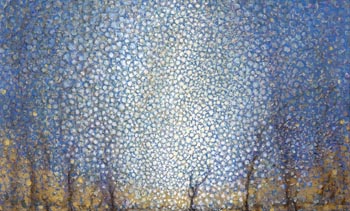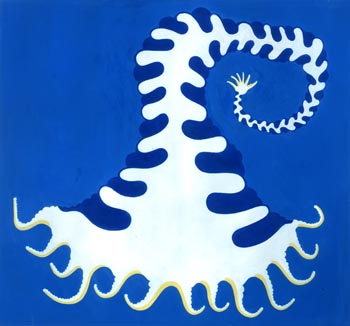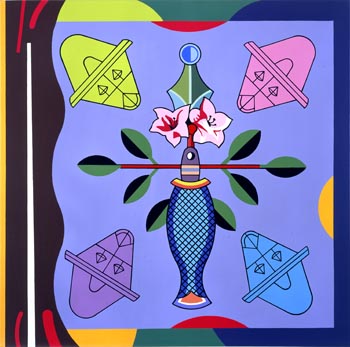![[Francis Naumann]](/4logo.gif)
![[Francis Naumann]](/4logo.gif)
Après Nous, le Déluge
(November 10 – December 22, 2006)
“Après Nous, le Déluge” examines the most basic element required for the making and understanding of a work of art: the act of looking.
Guest curator and artist Don Joint asked 16 artists—Susana Coffey, Eileen Foti, Elliott Green, Ro Lohin, Melissa Meyer, Mario Naves, Carl Plansky, Deborah Rosenthal, Susan Ross, Ivan Stojakovic, Randy Stoltzfus, Evelyn Twitchell, Douglas Vogel, Chuck Webster and Trevor Winkfield—to seek out a specific piece of Sèvres porcelain (the royal porcelain of France, founded in 1756) and create a new work based on their visual, emotional or intellectual response to their chosen object. The results demonstrate how multiple perceptions of a similar object open up that object’s potential meanings in varied and exciting ways.
The particularity of Mr. Joint’s decision to use an object as culturally and aesthetically charged as Sèvres porcelain highlights the important position throughout history certain decorative objects have had as cultural signifiers. Here, Sèvres porcelain can be seen as an analogue for a frivolous, elitist aristocracy (with functionless handles and jeweled surfaces serving no purpose except beauty), while simultaneously representing the pinnacle of excellence in the applied arts (those same decorative flourishes pioneered innovative design and placed Sèvres ahead of its competitors). The decision to use an object from the area of the applied arts also points to a general lack of appreciation for these items, a situation too common with most contemporary artists. There is a rich tradition of reciprocity between the various media of the visual arts, and this exhibition aims to highlight the decorative arts as a still-viable source for artistic inspiration.
On view alongside these artists’ works are top-quality examples of 18th, 19th and 20th century Sèvres porcelain. This gives the viewer the opportunity to examine and engage the object, much as the artists themselves might have engaged their own chosen piece of Sèvres. It is a rare opportunity to be able to experience the motif while looking at the finished product.
A fully-illustrated, 20-page catalogue—with an introductory text by Brice Brown—is available ($20, postpaid)


















